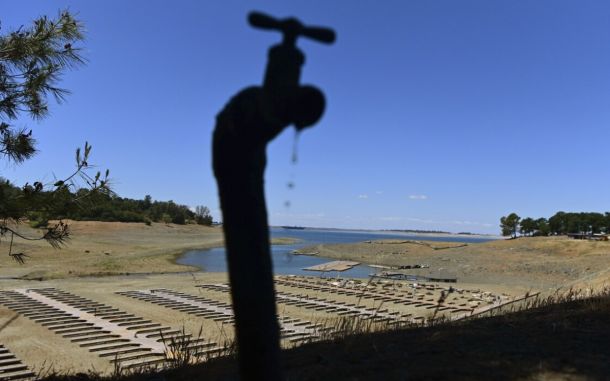Drought-Hit California Cities to Get Little Water From State

California water organizations that serve 27 million individuals will get only 5% of what they mentioned from the state to begin 2023, water authorities reported Thursday.
The fresh insight about restricted water comes as California closes its driest three-year stretch on record and as water chiefs prepare for a fourth year with less than ideal precipitation. In any case, on the off chance that the colder time of year is wetter than anticipated, the state could help how much stock it intends to give out — as it did last year when distributions began at 0% and finished the colder time of year at 5%.
Missing a finish to the dry spell, water-saving measures are ready to keep, including calls for individuals to tear up beautiful grass, limit open air watering, clean up and run dishwashers just when full. A lot of California is in outrageous or outstanding dry season, as per the U.S. Dry spell Screen.
A tempest right now finishing snow and downpour up of the state has been very positive news, yet individuals shouldn’t get too hopeful, cautioned Michael Anderson, the state climatologist. Last year two significant tempests in October and December were trailed by long stretches of very dry climate.
“Try not to get too snatched up by any one tempest,” Anderson told correspondents.
A lot of California’s water supply comes from snow that falls in the mountains throughout the colder time of year and enters the watershed as it liquefies through spring. Some of it is put away in supplies for sometime in the future, while some is sent south through enormous siphoning frameworks.
The framework is known as the State Water Task, and it gives water to 66% of the state’s kin and 1,172 square miles (3,035 square kilometers) of farmland. The Metropolitan Water Region of Southern California, which administrations Los Angeles and quite a bit of Southern California, depends on the state for around 33% of its water supply.
Southern California’s inventory is additionally undermined by the continuous emergency distressing the Colorado Stream, one more significant hotspot for the intensely populated locale. The region is dealing with a monstrous water reusing plant to enhance supply in the end.
“Metropolitan is giving our very best for ease the prompt emergency and make speculations to give a greater number of devices than crisis protection alone,” Adel Hagekhalil, the region’s head supervisor, said in a proclamation. “However, presently we want the public’s assistance. We can traverse this by cooperating.”
A few locale with restricted water supplies might get extra water if the 5% isn’t sufficient to cover basic wellbeing and security needs, said Molly White, water tasks chief for the State Water Project.
Given the vulnerability about how long the dry spell will endure, the state needs to keep water in Lake Oroville, its biggest repository. The present moment, it’s about half as full as it typically is during this season. So authorities intend to tap overabundance water from winter tempests to give the 5% stock and remove some water from the San Luis Repository in Merced Region, White said.
“We as a whole are simply kind of pausing our breathing to see what nature does,” said Michael McNutt, representative for Las Virgenes Civil Water Locale, which serves a few rich rural areas of Los Angeles and depends solely on state supplies.
The area may totally boycott open air watering in the event that dry circumstances endure, he said.
The national government likewise controls some water supply in California, quite a bit of which goes to ranchers in the tremendous Focal Valley who develop organic products, nuts and vegetables. The U.S. Authority of Recovery doesn’t give its most memorable water allotments until February however on Monday cautioned ranchers and urban areas to plan for restricted supplies.
“In the event that dry spell conditions reach out into 2023, Recovery will think that it is progressively troublesome, on the off chance that certainly feasible, to meet all the contending needs of the Central Valley Project without starting the execution of extra and more serious water protection activities,” the department said in a news discharge.





Leave a Reply
You must be logged in to post a comment.